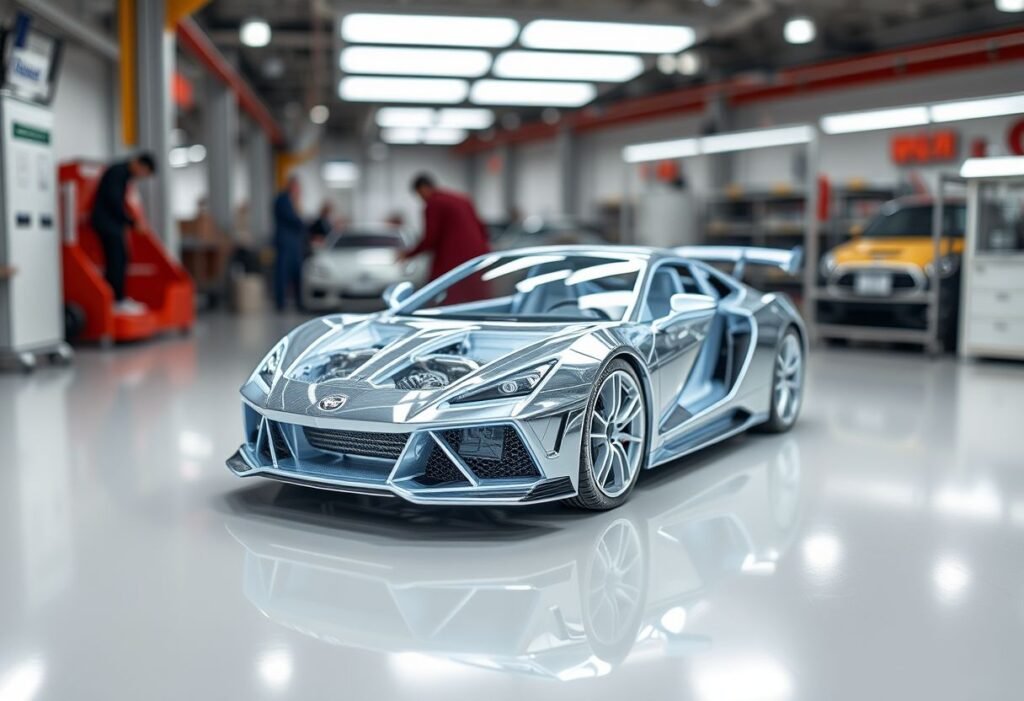The emergence of 3D printing technology is revolutionizing various industries, with the automotive sector being a primary focus of its innovative potential. As manufacturers seek new ways to enhance production efficiency and design flexibility, 3D printing is paving the way for groundbreaking advancements.
The Role of 3D Printing in Automotive Design
The integration of 3D printing into automotive design allows for unprecedented creativity and flexibility. Engineers and designers can rapidly prototype and test complex geometries that would be difficult or impossible to create using traditional methods. This capability not only shortens the time needed to develop new vehicle models but also significantly reduces material waste, contributing to more sustainable manufacturing practices. The ability to produce custom parts on-demand aligns perfectly with the growing consumer desire for unique, tailored vehicles, thus driving innovation further in the automotive space.
Enhancing Manufacturing Processes with 3D Printing
By adopting additive manufacturing, automotive companies are transforming their production lines. Traditional manufacturing often requires extensive tooling and setup, whereas 3D printing can streamline the process by allowing direct production from digital models. This shift not only cuts costs but also enables manufacturers to implement changes quickly as market demands shift. Furthermore, the use of 3D-printed components can lead to lighter, more fuel-efficient vehicles, showcasing a commitment to innovation in sustainability.
Cost Reduction Through 3D Printed Parts
One of the most tangible benefits of 3D printing in the automotive industry is the reduction in costs associated with mass production. With traditional manufacturing methods, the production of complex components often requires significant capital investment for molds and tooling. 3D printing eliminates some of these upfront costs, as parts can be printed directly without the need for complex setups. Moreover, the ability to produce small batches of components ensures that even low-volume custom parts can be economically viable, making it advantageous for manufacturers.
Improving Supply Chain Efficiency
3D printing approaches can help streamline the automotive supply chain. By localizing production, manufacturers can mitigate shipping delays and reduce lead times. Keeping production closer to where parts are needed means that suppliers can respond swiftly to changes in demand. This contributes to a more efficient supply chain, reducing the burden on logistics and improving overall operational effectiveness. These efficiencies provide manufacturers with a competitive edge in the market.
Propelling Customization in Vehicles
Customization has become a significant trend in the automotive industry, and 3D printing is playing a crucial role. Consumers today desire vehicles that reflect their personal style and preferences. With 3D printing technology, manufacturers can offer customization options that were previously unfeasible. From unique dashboard designs to custom-fitting components, the possibilities are endless. This capability empowers consumers while also fostering innovation among automakers as they adapt to this new demand.
The Future of 3D Printing in Automotive Innovation
The future of 3D printing in the automotive industry looks promising as companies continue to explore its potential. Advances in materials science are expanding the types of printable materials, allowing for stronger and more versatile components. As the technology evolves, automakers will increasingly rely on additive manufacturing to enhance their competitive position through innovation and sustainability. The landscape of automotive production is set to be transformed, paving the way for a new era of efficiency and design freedom.
Disclaimer: The information provided in this article is based on current trends and developments in the automotive industry related to 3D printing technology. For specific applications, consult with industry experts.





















